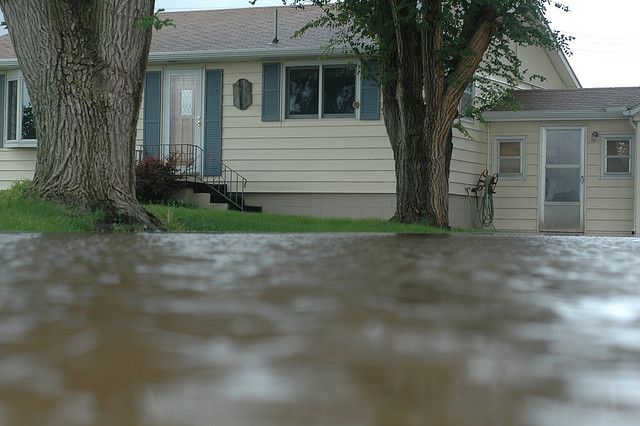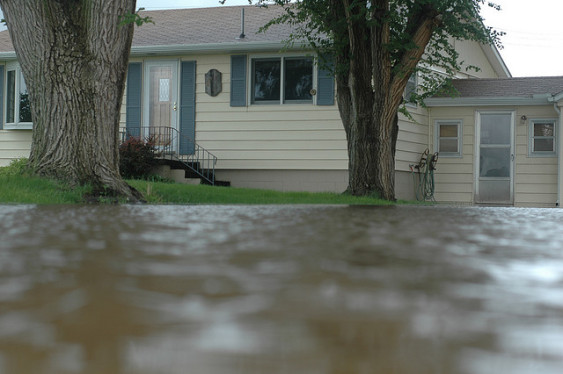Drought devastated vast swaths of the continent this year. Wildfires raged. More recently, Colorado got more rain in one work week than it often gets in entire years, causing flooding that washed away homes, roads, and bridges in Boulder, Colorado, and the surrounding area. The flood killed at least eight people and left hundreds unaccounted for. The rainfall has been called Biblical—and that’s by the National Weather Service which typically doesn’t editorialize. So, what do we make of all this destruction that seems out of the ordinary, but is often explained away as a fluke, as the result of natural variation, or as “historically bad luck,” as one Time editor dismissively put it?
All those factors—and others—certainly play a role in extreme weather. But the fact is that by changing the climate with carbon pollution we’re pushing our luck.
Little good can come from these catastrophes. But, at the very least, one hopes that out of the destruction and heartbreak will rise a frank discussion about climate change. But there’s work to be done to make that happen. As Steve Hendricks points out, if you run an online search for “Colorado flooding” and “climate change” or “Colorado flooding” and “global warming” “you’ll see that virtually none of our nation’s big newspapers or influential websites have a thing to say on the matter.”
But, how do you talk about it when the science is complicated and the politics are so charged?
Start with the basics. This is crucial. Do not lead with what’s unknown. When weird weather strikes, what people want to know is what we’re quite sure of. And when I say the basics, I mean it. Is climate change happening? Is it caused by humans? Does it play a role in our weather?
Yes, yes, and yes. People need to hear this. People need to hear this when they are trying to make sense of destruction and chaos like the floods in Colorado.
When called upon to talk about climate and crazy weather, here are the elements to cover before you say anything else:
The Basics: Climate and Crazy Weather
- Human activities—especially burning coal, oil, and gasoline—are loading our atmosphere with heat-trapping gases. The result is a warming climate and we are seeing impacts all around us.
- The extreme weather we’re seeing across the country and in our backyards is driven by many factors—and human-caused climate change is now one of those factors.
- Climate change is making many types of extreme weather more frequent and more intense, including the kinds of severe and dangerous drought, wildfires, and flooding we’ve seen this year.
Always start with these simple, straightforward facts. What you say first frames the rest of the conversation. What you start with makes the soundbite.
It doesn’t hurt to emphasize that climate change is impacting our weather now, and that we’re seeing the effects with our own eyes. (Photos of the Colorado floods bring this home in a way words cannot.)
Now, for the well-versed, the basics might seem simplistic. But we know that for most audiences piling on more and more complicated scientific evidence fails to change minds or spark action—and getting mired in the “debate” frame gets us nowhere fast. But any hint of uncertainty is often read as dismissal of all climate science or at least as a damper on urgency. Remember, your aim is not to convince deniers. But, with all the confusion, delusion, and misinformation (or simply omission) out there, most of us need the basics to be stated in plain terms.
From Basics to Details: The Colorado Flood
Once you’ve laid the groundwork, you can dive down deeper and talk more about the specifics for a given weather event. In Colorado, for example, there’s a chance to explain that an increase in heavy precipitation due to climate change has contributed to flooding, a pattern that has been observed around the world. Climate Nexus offers an apt metaphor for describing how climate leads to a new kind of extreme downpour: “As the atmosphere warms, it holds more moisture. So when it rains, it pours out of the sky as if emptying out of a larger bucket.” (For a good scientific explanation, see here.) It’s also worth talking about how climate scientists agree we should expect more extreme rainfall events like this one in the future.
If somebody asks you about how drought and flooding—two seemingly opposite extremes—could both be resulting from climate change, you can explain that an atmosphere overloaded with carbon not only creates different weather extremes in different regions (where one part of the country could be parched and another drenched), it also creates a see-saw effect between extreme dry and extreme wet conditions in one place: As stated, a wetter atmosphere supercharges storms. Also, because more precipitation occurs as rain instead of snow with warming, and snow melts earlier, there is increased runoff and risk of flooding at certain times, but more heat leads to increased risk of drought at others.
If you want to talk about how recent drought and wildfires might contribute to dangerous flood conditions, Hendricks’ description of the situation in Colorado is useful:
The problem with drought is that when soils are overcooked, they become hard. When they become hard, they don’t soak up water as quickly. They send it downhill—into creeks, into your basement, wherever. Ironically, if the area has been really cooked, by a wildfire, as some of the surrounding area had been, you have the opposite problem: there will be no ground cover to hold the soil in place, and it will get moving in a hurry—changing the course of creeks, smashing through your basement walls. The result is—well, you’ve seen the result in the pictures and videos streaming out of Colorado.
In the end, while it’s impossible to say climate change caused Colorado’s unfolding disaster, it’s possible to say that an altered climate contributed both to the likelihood and severity of the disaster. We can also conclude that the Colorado flood is perfectly in line with expectations for a climate disrupted by too much carbon. You can say that this is one more in a rash of recent wake up calls about the seriousness of climate impacts now and into the future.
This kind of event, for all its cost in life and property and security, may help build the necessary political will for solutions. When laying out the basic facts that connect climate disruption to carbon pollution, we shouldn’t shy away from saying that the good news is that solutions are at hand—indeed, we have the know-how and the tools, both technological and political, to build a clean, reliable energy system to address the problem.










Louise Stonington
This is good advice, except the ‘Basics’ should be four, and include some hope, for pete’s sake! We have options, clean energy and efficiency can help us phase down fossil fuels. This message should be included in every explanation of climate change. There are lots of suggestions for immediate effective action. I encourage citizens can put pressure as consumers, voters, and users of media to counter the propaganda against a clean energy economy. Join Citizens Climate Lobby, and make a difference.